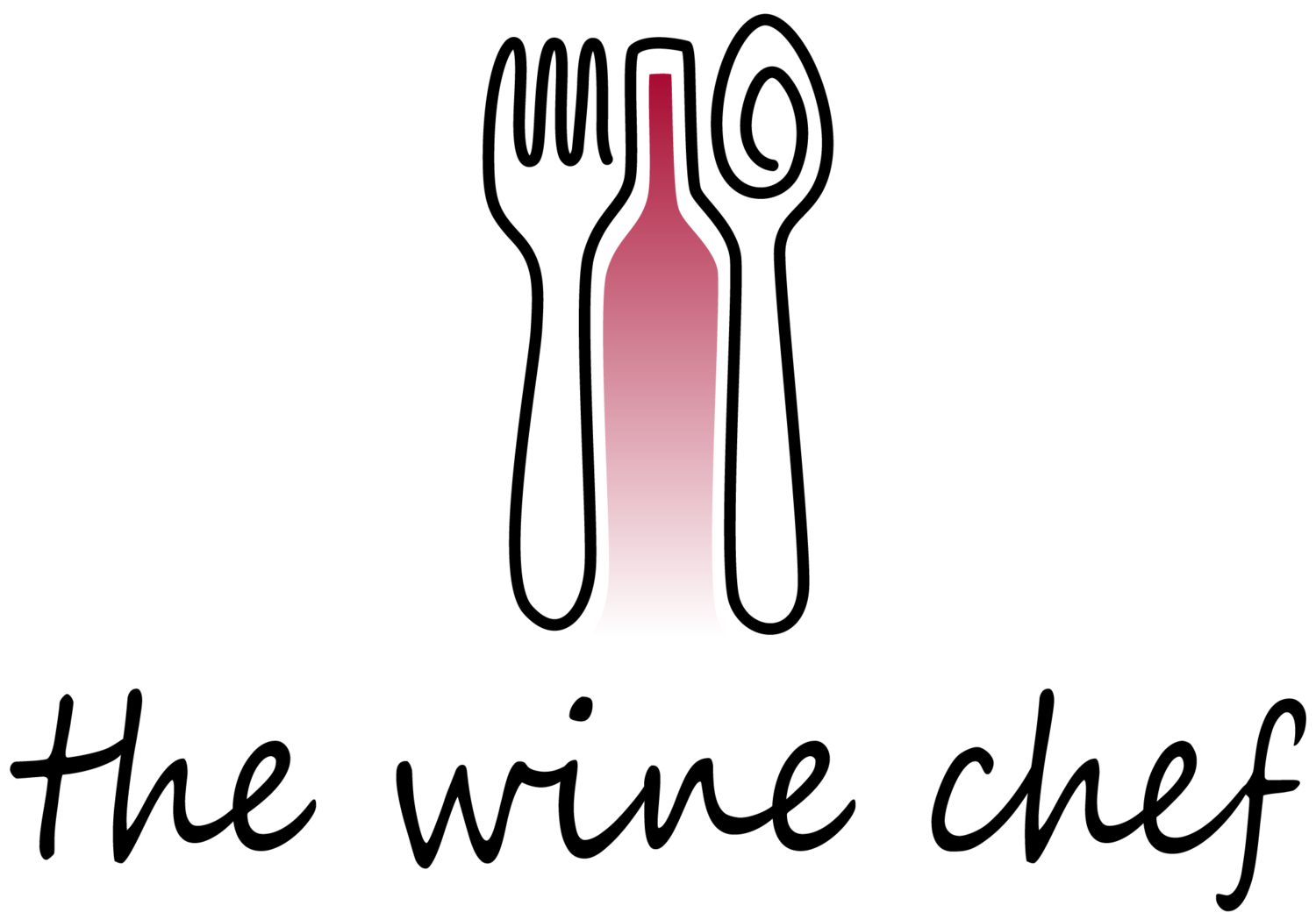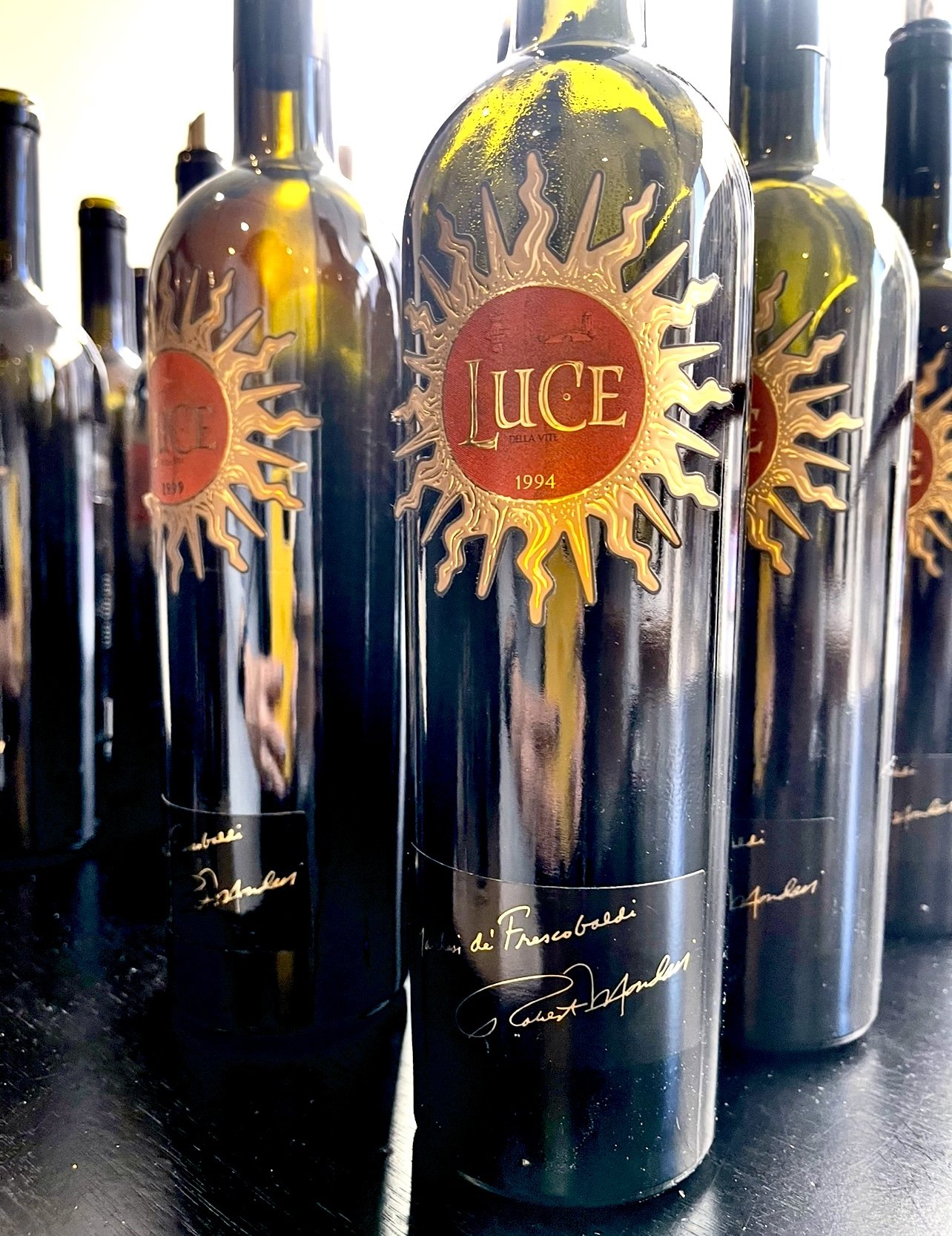Let There Be Luce: Three Decades of Tuscan Excellence
/You know what they say—rules are meant to be broken, and isn’t it true that creativity often lives just outside the lines?
Thirty years ago, in the heart of Tuscany’s Brunello di Montalcino wine region, the legendary Frescobaldi family joined forces with Napa Valley icon Robert Mondavi to push the boundaries of tradition. Their bold idea created something unexpected: Tenuta Luce, a Super Tuscan blend of Sangiovese with Merlot.
"When they decided to make this wine back in the '90s, they were thinking outside of the box," says Alessandro Marini, Luce’s oenologist and technical director since 2019. "It was an uncommon blend in Montalcino, where, of course, the king of varieties is Sangiovese used for Brunello di Montalcino.”
Today, it feels like a natural expression of place and vision.
While the Italian-American partnership eventually dissolved, with the Frescobaldi family taking over sole ownership in the early 2000s, the founding vision has remained unchanged: producing a bold Super Tuscan with dark fruit, floral, and spice complexity, and refined tannins. The estate has since expanded beyond its original vision, with premium vineyards across Montalcino and a modern winery completed in 2018.
“The Luce wine has been a unique opportunity to experiment with new approaches and techniques in the vineyard, in the winery, and during the aging process, enriching my skills and passion.”
Tenuta Luce’s winery: a blend of architecture, nature, and history. Photo: @tenutaluce
To celebrate its 30th anniversary, Tenuta Luce has partnered with Christie's Auction House to offer collectors a special lot featuring the 30th Anniversary edition, cementing the estate's commercial success and cultural significance in the wine world.
“These rich, vivid, full-on Montalcino wines rarely falter, combining the generosity and opulence of Merlot’s plum and black fruit flavors with the vibrancy, refreshing acidity, firm tannic structure, and cherry flavors of Sangiovese. A great combination!”
Luce's name and distinctive sunburst label draw inspiration from Florence's Santo Spirito church altar, built on land donated by the Frescobaldi family.
The Land and the Wines
Located in southwestern Montalcino, the estate—615 acres, of which 217 are planted with vines—benefits from a unique terroir. The area, teeming with wildlife, is Montalcino’s warmest, but Mediterranean breezes help ward off disease and preserve the wines' freshness.
Marini notes the region's distinctive microclimate: "During the day, we can have almost desert-like conditions, sometimes 35 degrees Celsius (95°F), but during the night, we have a huge shift of temperatures."
The soil composition is also crucial to the wines' character. At higher elevations, schist-rich soils suit Sangiovese, lending freshness and minerality. Lower down, clay soils favor Merlot, adding body and ripe fruit depth. This thoughtful pairing of site and variety forms the backbone of Luce’s identity. Sangiovese brings structure, acidity, and red cherry brightness, while Merlot adds softness, volume, and lush dark fruit.
The 2002 vintage was the only time Merlot took the lead in the blend—a smart move given the tough growing season for Sangiovese that year. Luce adapts to each vintage, letting climate and careful vineyard and cellar work shape the story of every bottle.
Three Decades in the Glass
A recent vertical tasting of ten vintages spanning Luce's history was held in Manhattan at Christie’s including 2022, 2019, 2016, 2015, 2013, 2009, 2005, 2002, 1999, and 1994. Marini (in photo) identified three distinct stylistic periods:
Early Period (1990s): The ‘93 and ‘94 vintages were the first experiments with Luce.
The ‘94 displays remarkable vitality, with tertiary notes of dried leaves, leather, and truffle. The wine is still alive with good structure, subtle fruit, and a long finish.
The ‘99 vintage was in the shadow of the famous '97. However, it still displays tangy herbal notes and a fresh finish. Tim Tiptree recommends drinking this wine now as it will “soon start to decline.”
Middle Period (2000s): This era emphasized ripeness and exuberance.
The ‘02 (unique, with 60% Merlot) is round and accessible, with less acidity.
The ‘05, from a cooler season and the first post-Mondavi vintage, showed a touch of oak mingled with dried fruit notes, like figs.
In contrast, the ‘09, from a hot, wet vintage, was surprisingly fresh, expressing Luce's characteristic cherry, plum, and herbal notes.
Recent Period (2013-Present): These vintages show a shift toward fruit-forward profiles with a more elegant oak integration.
The ‘13, from a warm season with a cool September, achieved great balance despite its bold, exuberant fruity notes.
The ‘15 was also from a warm vintage and is a bold, alcoholic style that’s drinking beautifully now. Its tertiary notes of tobacco, leather, and cedar are just beginning to show.
The exceptional 2016 (my favorite) displayed precision and fresh-fruited energy with a long finish, and decades of aging potential ahead.
The ‘19 is very elegant, with more of Sangiovese’s vibrant acidity apparent.
The youthful 2022, from a warm vintage and in its “embryonic stage,” shows great concentration and structure balanced by freshness—a fruity yet elegant wine.
Lucente: The Younger Expression
Alongside its flagship wine, Tenuta Luce produces Lucente from younger estate vines. This "second wine" follows the same Sangiovese-Merlot philosophy but with less oak aging. Lucente’s friendlier price tag of around $35-$42 per bottle (vs. about $110-140 for Luce) makes it a great way to taste the estate’s unique style.
Marini explains: "With Lucente, we wanted to produce more, but what matters most is to create something fresh and fruit-forward."
I sampled the 2022 Lucente at home, and, as you can tell from my initial tasting notes, I was impressed: “Fresh and fruity with grippy (but not crazy) tannins. A lovely wine!”
Looking Forward
As Tenuta Luce enters its fourth decade, its biggest challenge is adapting to new weather patterns. "You can't deny that climate change is a real issue," notes Marini. "Warmer temperatures are impacting wine quality by accelerating fruit ripening, leading to higher sugar concentration and, ultimately, higher alcohol levels."
To adapt, Luce’s team is turning to drought-resistant rootstocks, strategic irrigation, canopy management, and earlier harvests to maintain freshness and structure.
The next 30 years will surely bring obstacles, but Luce's proven ability to maintain its identity while adapting to each season's particularities suggests a bright future for this Montalcino star.






























